Noor SalehFebruary 26, 2021
Tag: NMN , nucleotide , Niacin
1. What is Nicotinamide Mononucleotide (NMN)? (1),(3),(4)
Nicotinamide Mononucleotide, abbreviated as NMN or β-NMN, is a nucleotide that is derived from Ribose and Nicotinamide, as illustrated in the following Figure No. 01.
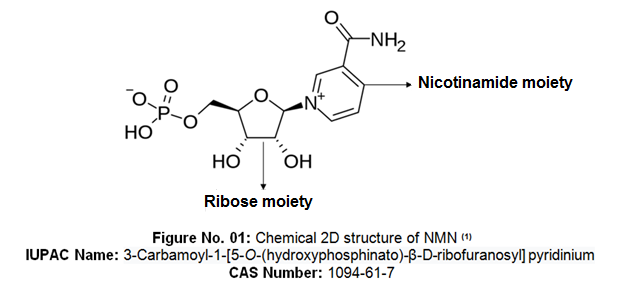
NMN can be considered as a Niacin derivative as well. The following Figure No. 02 illustrates the structural similarities between Nicotinamide and Niacin.
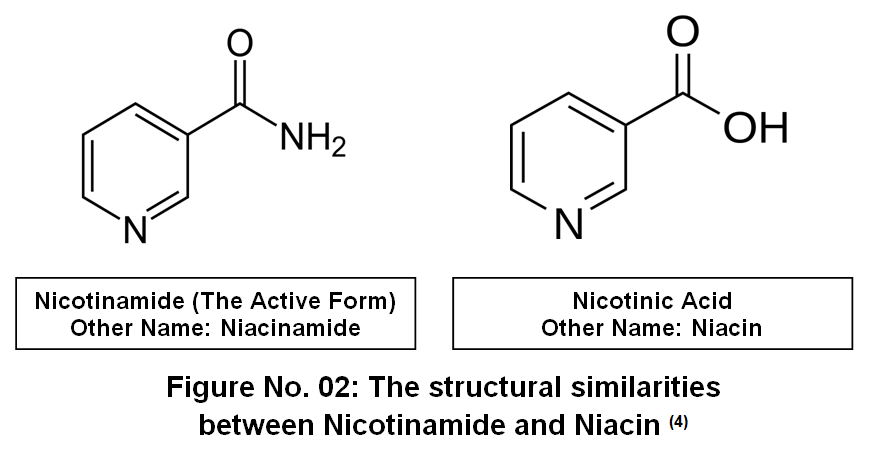
Other names of this compound are:
1. Nicotinamide ribonucleoside 5'-phosphate
2. Nicotinamide D-ribonucleotide
3. β-Nicotinamide ribose monophosphate
4. Nicotinamide nucleotide
The following table No. 01 summarizes all the computed chemical characteristics of NMN (1).
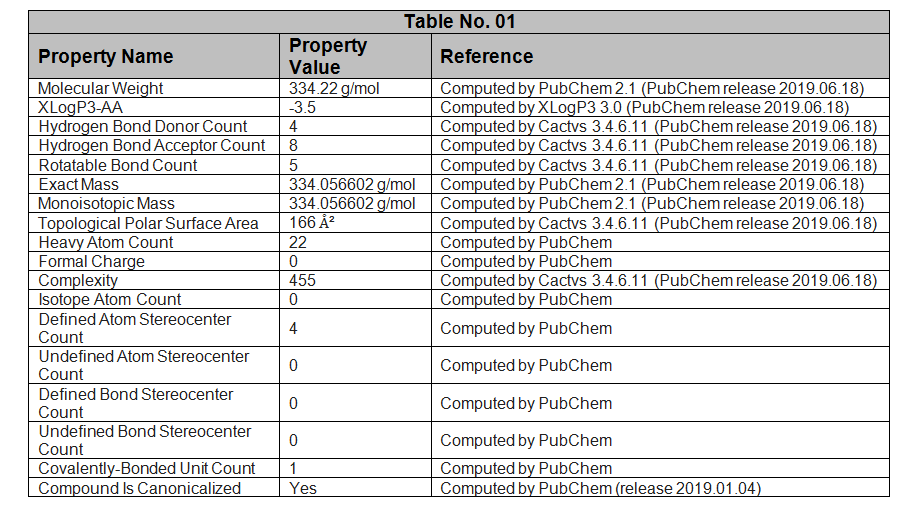
The following table No. 02 summarizes all the main predicted physical characteristics of NMN (3).
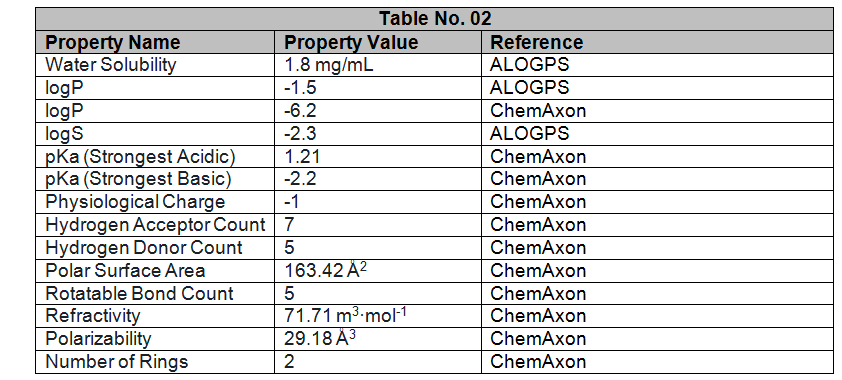
2. What are the specifications of NMN raw material? (2)
NMN is usually supplied in the form of white lyophilized powder. For the detailed technical specification of NMN raw material (e.g. physical description, identification, grade, purity, assay, water content, spectral analysis, metal content as well as the recommended storage conditions by the manufacturer), you can easily search through PharmaSources.Com platform for all relevant suppliers who are going to respond to any of your enquiries. You can either search in the information available in each supplier`s profile, or inquire the relevant Drug Master File (DMF) or Certificate of Analysis (COA) directly for any extra details.
3. How is NMN chemically synthesized? (5)
The manufacturing process of NMN starts by the synthesis of its precursor Nicotinamide Riboside NR+, which is also called: (β-D-Ribofuranosyl) Nicotinamide. Refer to the following Figure No. 03 to find the structural similarities between NR+ and its phosphorylated derivative NMN.
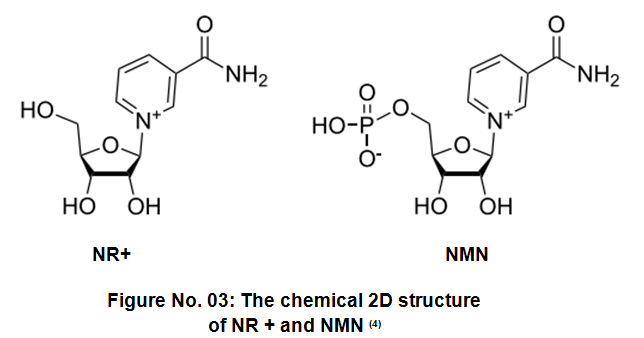
3.1 Zincke reaction:
While NMN can be found in many natural resources, but it can also be synthesized through Zincke reaction. This reaction involves the following two compounds:
N-(2,4- dinitrophenyl)-3-carbamoylpyridinium chloride (compound A) and 2′,3′- O-isopropylidene-α/β-D-ribofuranosylamine (compound B).
The following Figure No. 04 illustrates Zincke reaction.
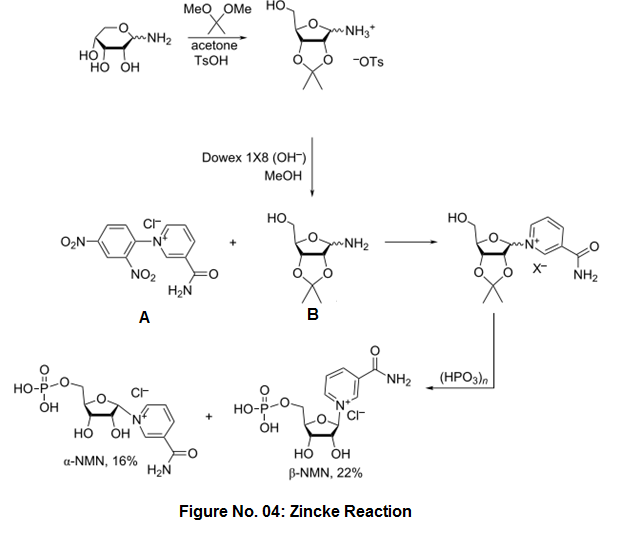
The reaction is completed using methanol at room temperature over night, and the crude mixture α/β-N-(2,3-O-isopropylidene-D-ribofuranosyl)-3-carbamoylpyridinium salt should be separated and phosphorylated with meta-phosphoric acid to produce a mixture of α/β-NMN.
Both anomers need to be separated using column chromatography. Reported reactions yields are: 22% for the β-NMN anomer and 16% for the α -NMN anomer.
3.2 Zincke reaction starting with 5-phospho ribose:
Zincke reaction can proceed also by starting with 5-phospho ribose that will be treated to produce 5-phosphorylated aminoribose (compound C), as illustrated in the following Figure No. 05.
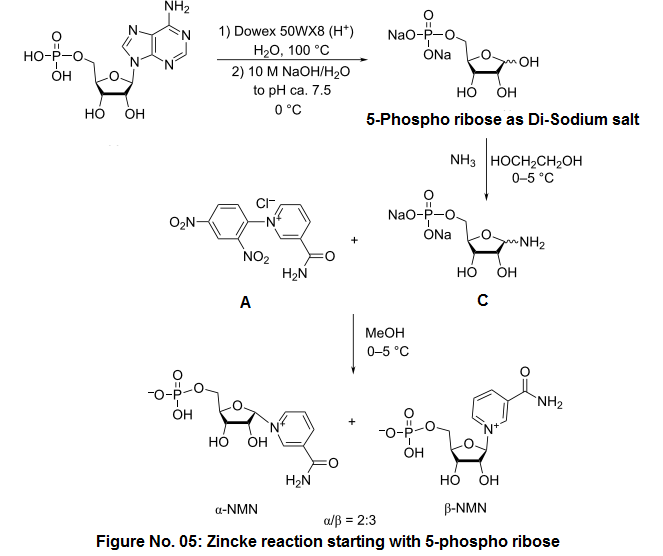
At first, 5-phospho ribose is obtained by the hydrolysis of Adenosine Monophosphate AMP. After that, 5-phosphorylated aminoribose (compound C) will react with N-(2,4- dinitrophenyl)-3-carbamoylpyridinium chloride (compound A) using the anhydrous methanol at 0–5 °C for 14 h to yield a 3:2 mixture of β/α-NMN. The reported yield is 24-60% depending on the 5-phospho ribose content.
4. What are the uses of NMN and how does it work? (6),(7),(8)
In the body, there are certain steps responsible for the conversion of NMN to Nicotinamide Adenine Dinucleotide, abbreviated as NAD+. This compound in turn is a co-enzyme that acts in the mitochondria (i.e. an organelle inside the cell that is responsible for the production of the energy). Also, NAD+ acts in physiological processes other than the metabolism, such as: aging, cell death, DNA repair and gene expression.
Since NMN is considered as a precursor for the production of NAD+, NMN supplements manufacturers claim the neuro-protective and anti-aging effects of this compound.
Potential benefits of NMN are:
1. Promotes the vascular health: studies in mice have shown that NMN helped to reduce blood vessels stiffness and to enhance the blood flow.
2. Improves the strength of the muscles: NMN administration will help in sustaining the supply of NAD+ to the muscles, which in turn is an essential for the growth of muscles.
3. Protects the heart: the potential benefits of NMN extend also to the cardiac cells.
4. Controls obesity: NMN will help to sustain NAD+ supply to the cells which helps to regulate the rate of metabolism. In mouse studies, NMN displayed an effect that mimicked the aspects of Calories Restriction. However, the optimum control of obesity requires to adhere to a healthy diet and to exercise regularly as well.
5. DNA repairing: NMN induces the production of NAD+ which is responsible for the activation of proteins called Sirtuins. Sirtuins affect the metabolic control, cell apoptosis (i.e. death of cells) and cell survival. Also, these control the Oxidative Stress OS, hence; have potential anti-aging effects.
6. Reduces mitochondrial dysfunction: NMN helps to sustain the supply of NAD+ to the mitochondria which will help prevent the mitochondrial problems as well as some of the neurological disorders, such as: Alzheimer disease.
5. Nicotinamide Riboside NR+ Vs Nicotinamide Mononucleotide NMN: Which one is better? (9)
Among the different precursors of NAD+, only NR+ and NMN have better pharmacokinetic and pharmacological properties. The main difference between both of them is that in the human body, NMN is the direct precursor for NAD+, but NR+ needs to be converted to NMN by an enzyme called NRKs then to NAD+.
On the one side, NR+ is highly available in the human diet and there are many safety studies that support the administration of NR+, on the other side, further clinical and toxicological studies are required to demonstrate the safety of NMN for the human consumption.
Eventually, while it is difficult to differentiate between the efficacy of NR+ Vs NMN, it can be concluded that both have overlapping effects. Meanwhile, NMN can be used as a potential molecule in treating different types of ailments because of its significant pharmacological effects in the pre-clinical trials.
6. What are the Pharmakokinetics PK and Pharmacodynamics PD of NMN? (3)
This compound has no well-established PK/PD profiles yet.
7. What is the recommended dosage of NMN? (6)
The first international trial conducted to evaluate the safety of NMN in humans was in Japan and it showed that it is safe to administer up to 500 mg of NMN orally in humans.
Further clinical trials are required to determine the effective and safe dose for humans.
The oral administration of 1 gm of NMN daily to boost the metabolism of NAD+ is reported in literature.
8. Where to buy NMN in bulk?
For any enquiries related to the commercial supply of NMN raw material, search directly in PharmaSources.Com database which includes a large number of reputable medical product suppliers of this material. Consult the profile of each manufacture or distributor to ask for the details concerning: the monograph (if applicable), the manufacturing method, the COA, as well as the logistics of the shipment process (e.g. price per Kg, Kg per drum, min QTY in order, storage conditions, etc…).
9. What are the common side effects of NMN? (6)
So far, there are no documented side effects for the consumption of NMN in humans, noting that the majority of the conducted studies were in rodents, and one long-term study in mice revealed that the administration of NMN was not associated with toxicity, serious complications or increased mortality rate during the 12-months study period.
Nonetheless, further research is required in this area.
10. Reference and links?
1. https://pubchem.ncbi.nlm.nih.gov/compound/Nicotinamide-mononucleotide
2. https://www.pharmasources.com/products/searchKey-NMN
3. https://go.drugbank.com/drugs/DB03227
4. https://en.wikipedia.org/wiki/Nicotinamide_mononucleotide
5. https://www.beilstein-journals.org/bjoc/content/pdf/1860-5397-15-36.pdf
6. https://www.nmn.com/precursors/nmn-benefits-side-effects-dosage
7. https://www.ncbi.nlm.nih.gov/pmc/articles/PMC7198709/
8. https://www.sciencedirect.com/topics/medicine-and-dentistry/sirtuin
9.https://www.ncbi.nlm.nih.gov/pmc/articles/PMC6359187/
About the Author
Name of the Author: Noor A. Saleh.
An industrial pharmacist with more than 5 years of experience in the field of pharmaceutical manufacturing, who has a deep GMP knowledge in the following areas: handling of all types of document management activities in alliance with ICH, FDA, Eudralex & PIC/S guidelines, handling of deviations, out-of-specification (OOS) reports, and all types of suppliers’ nonconformities, issuing of Annual Product Quality Reviews (APQRs) and Quality Metrics report, and following up the qualification activities of all new suppliers and reviewing their technical agreements.


Contact Us
Tel: (+86) 400 610 1188
WhatsApp/Telegram/Wechat: +86 13621645194
+86 15021993094
Follow Us:




 Pharma Sources Insight July 2025
Pharma Sources Insight July 2025


